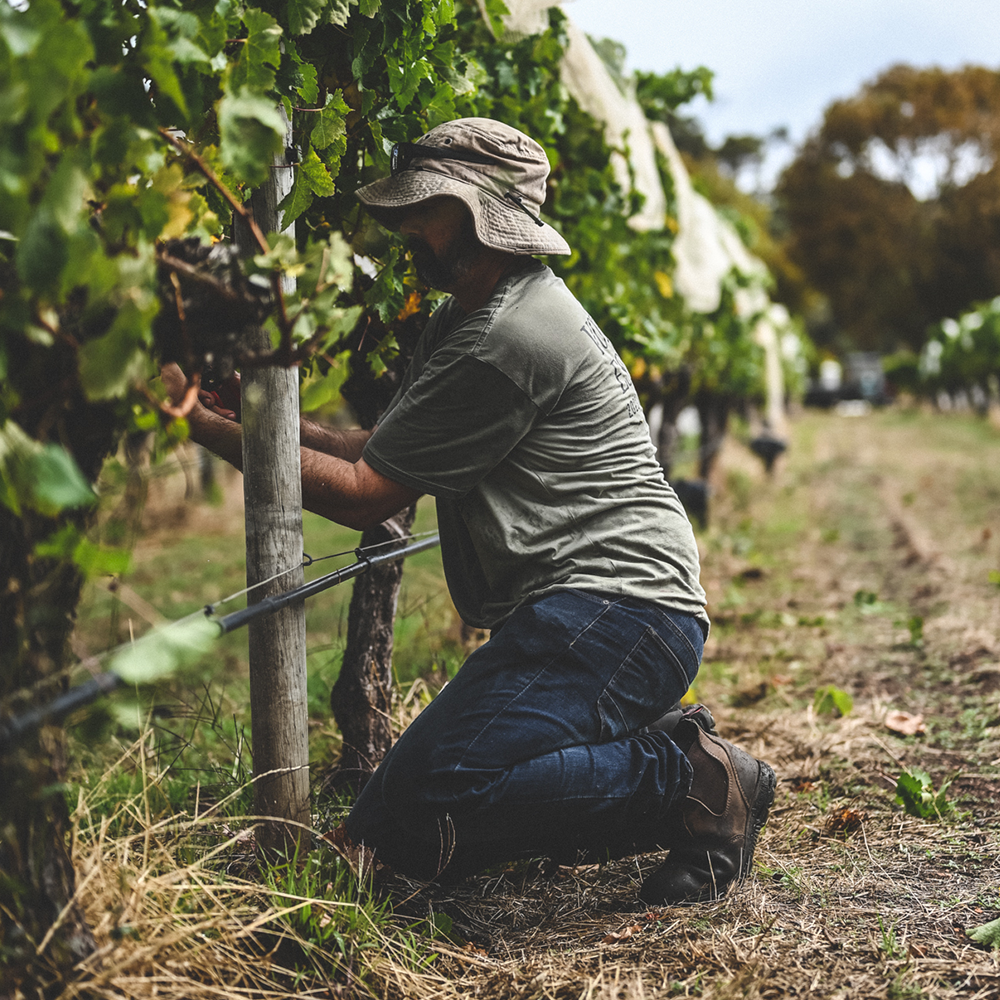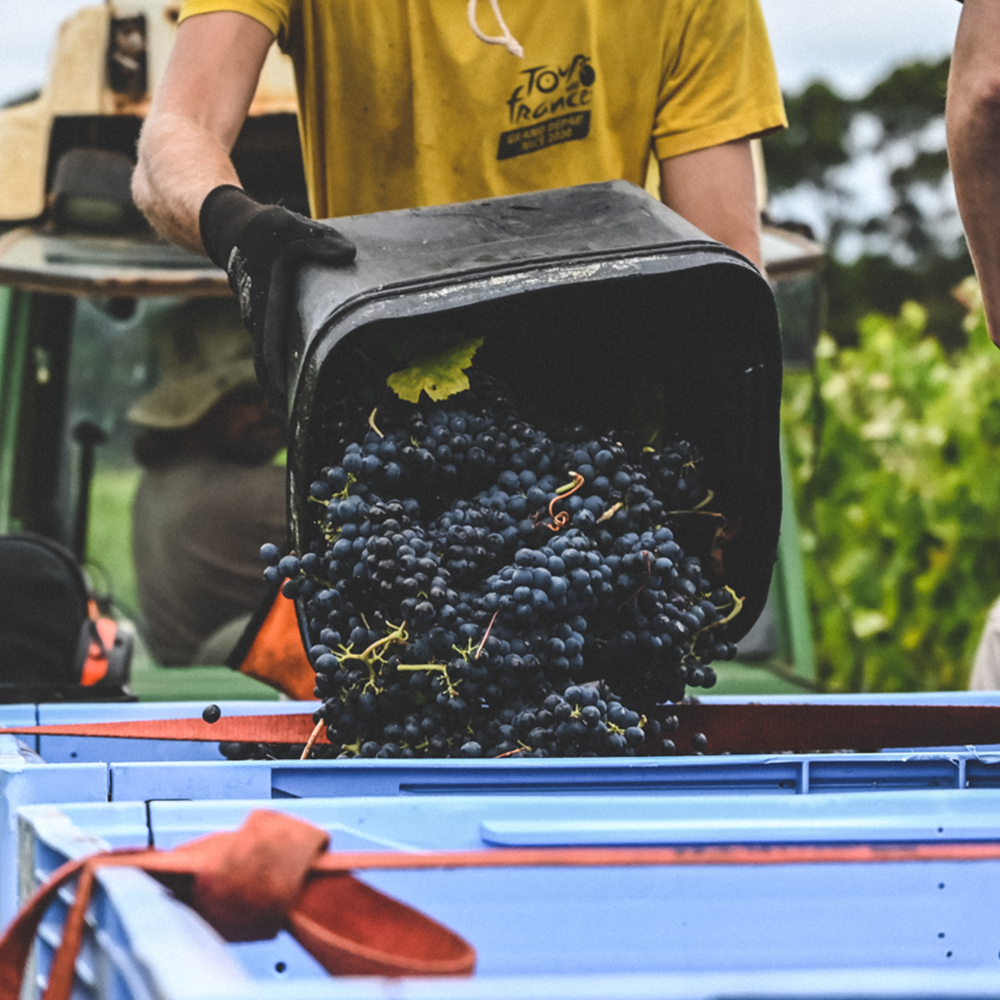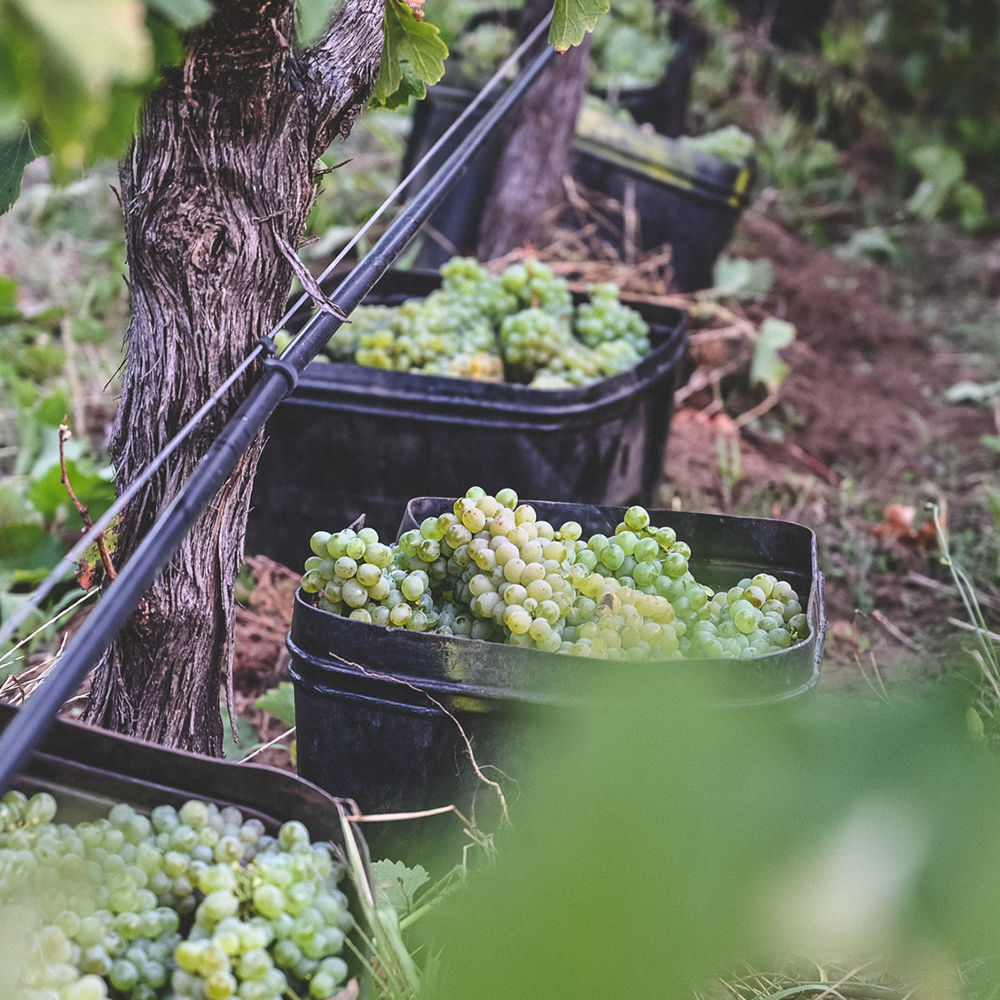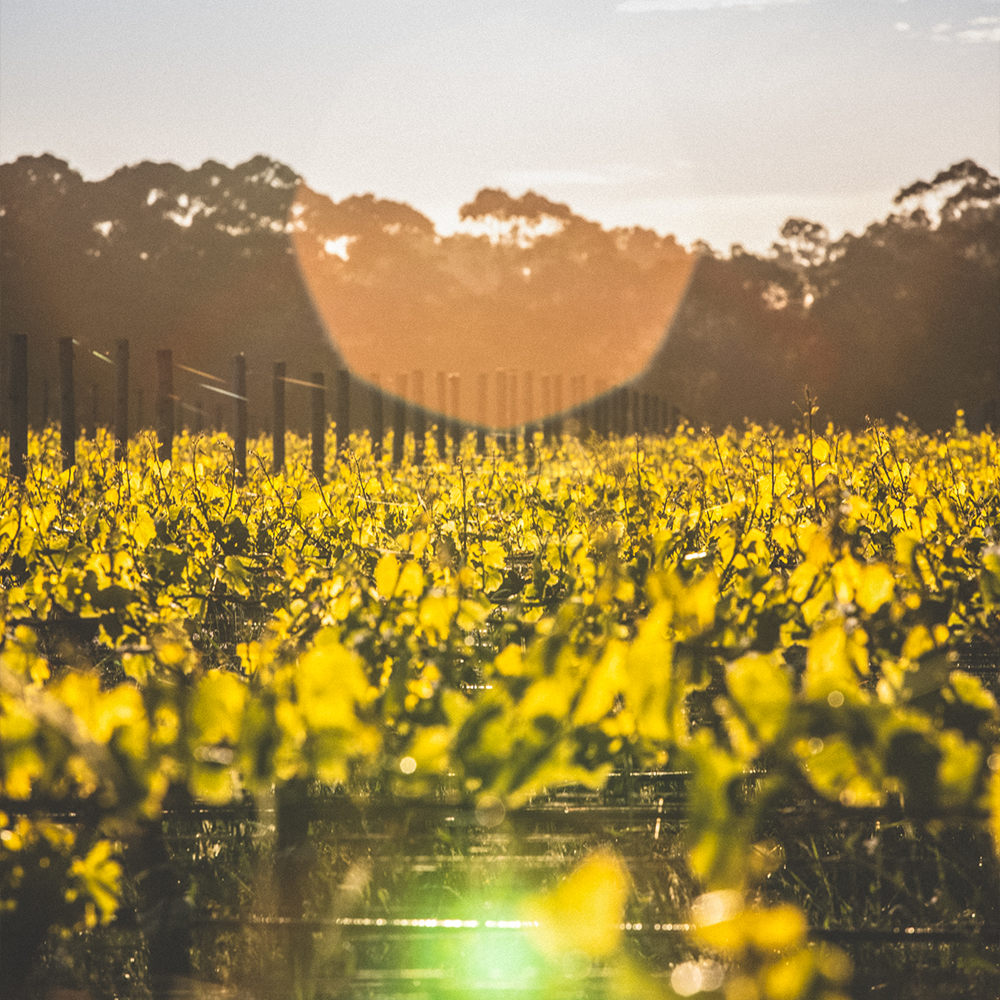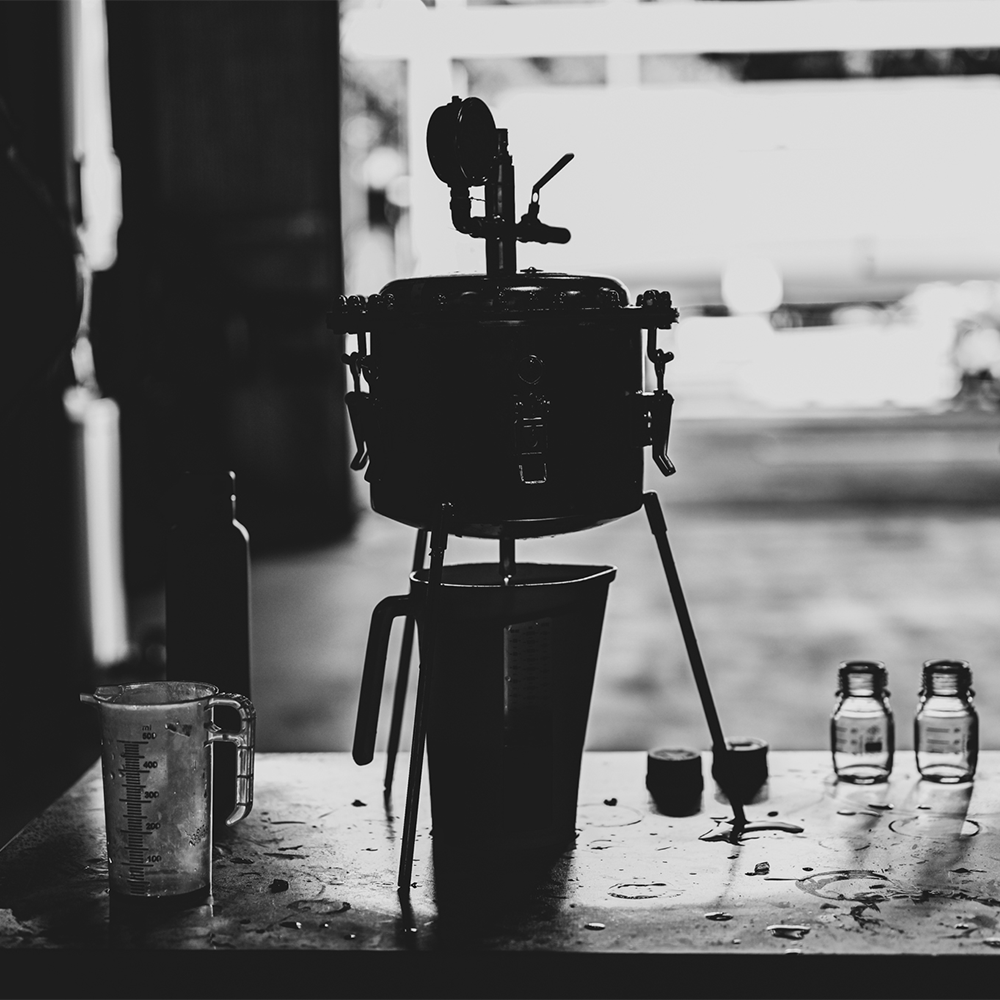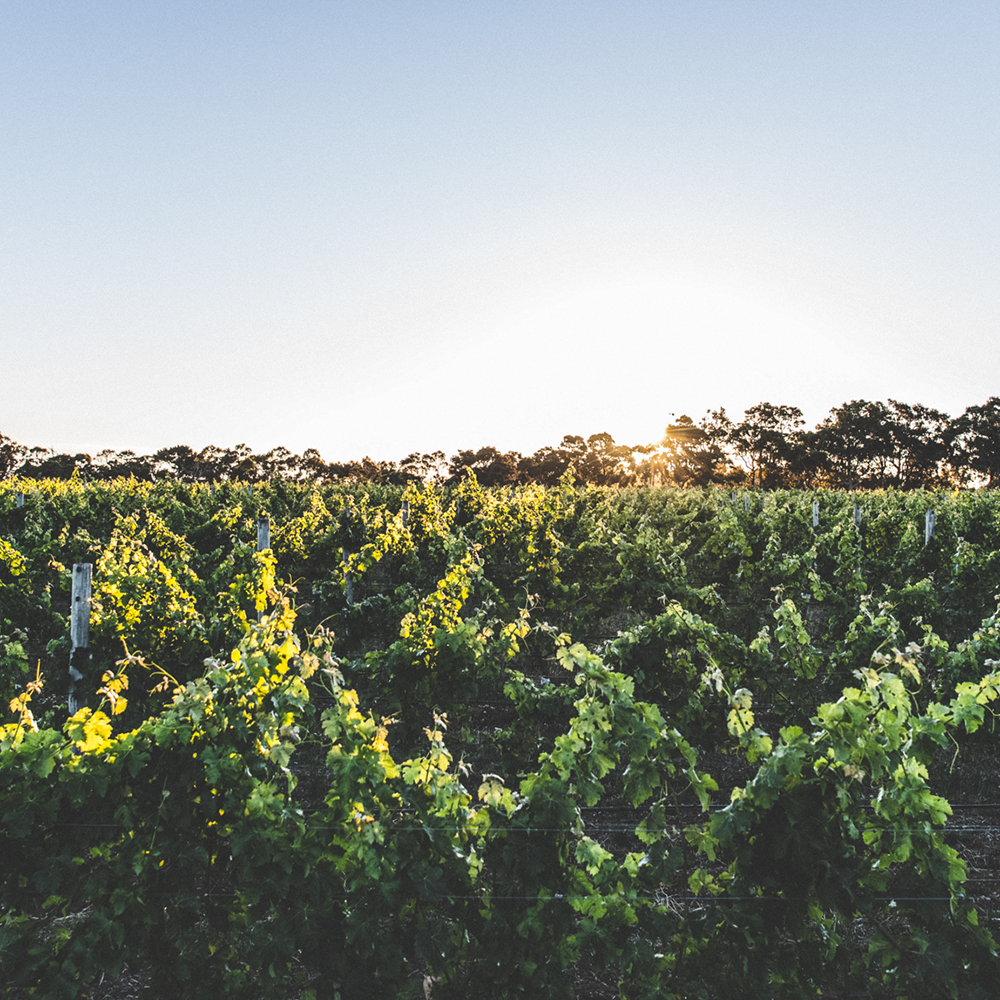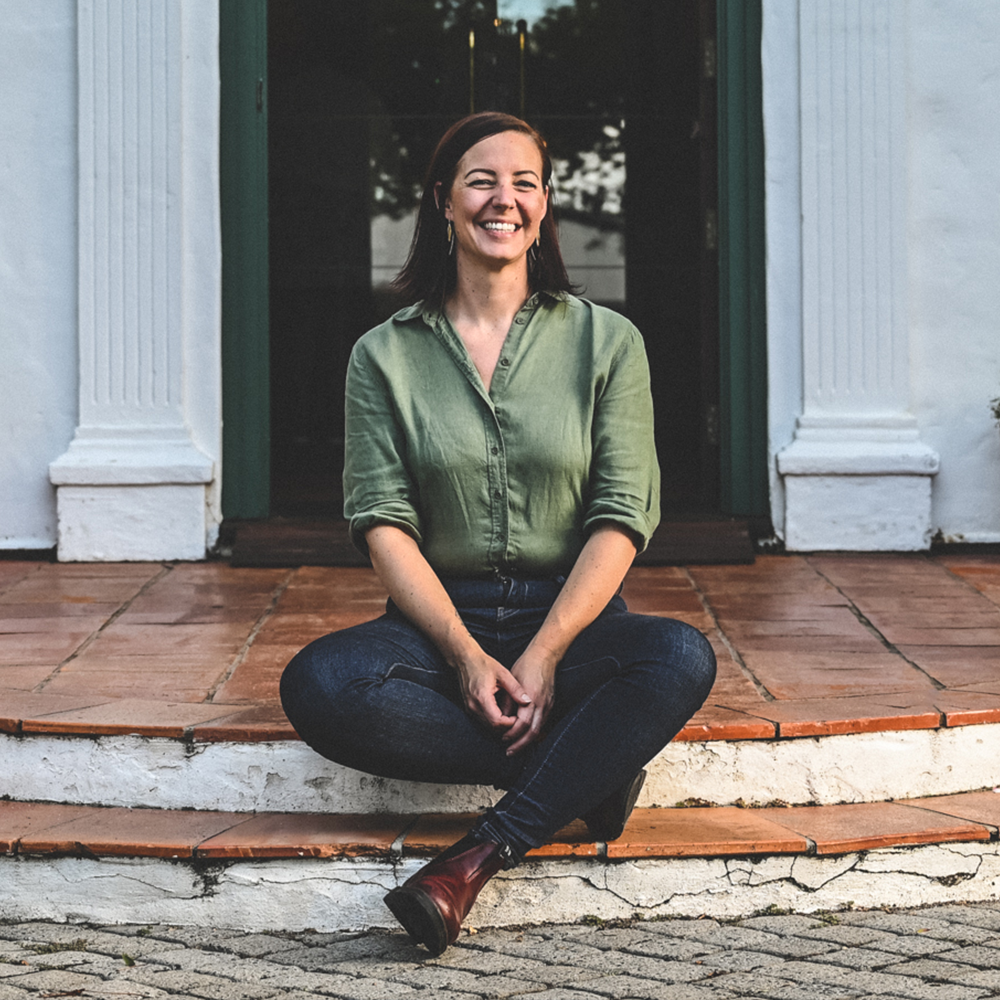Blog
A 25 YEAR CELEBRATION
April marked the 25th anniversary of the official opening of the Voyager Estate Cellar Door to the public, and to commemorate this milestone, our Proprietor Alexandra Burt shares a little insight into how one man's vision came to life…
“My father and founder of Voyager Estate, Michael Wright (1937-2012), was a wheat and wool farmer, an entrepreneur and a keen traveller. He was inspired by the grand cellar doors he visited in the Cape area of South Africa. Arguably well ahead of Australia at that time, they had a focus on creating high-quality yet accessible visitor experiences. Most of the cellar doors in the Cape winelands were welcoming people seven days a week without needing an appointment – quite different to the more exclusive approach taken by the French and Italian houses. Immediately, he saw the connection between this broader approach to tourism and the burgeoning scene in Margaret River.
Armed with this knowledge from his experiences in South Africa, Michael embarked on one of his most treasured projects: building the cellar door and garden at Voyager Estate. It was a vision that came to life in multiple stages over many years and was realised with limitless passion, determination, and an unwavering commitment to detail.
Michael chose the Cape Dutch style of architecture and landscaping simply because he really, really liked it. The blend of highly-detailed, crisp, white edifices with formal yet verdant gardens had an aesthetic appeal that he thought would surely be attractive to others too – a place people would want to see and experience for themselves and a memorable way to introduce people to Voyager Estate wines.
Many gifted designers and practitioners played a role in the creation of our cellar door and garden. Perhaps the man of that hour and very much Michael’s partner-in-crime was the celebrated WA architect, Geoffrey Summerhayes. Our builder, and the local hero of this story, Gordon Temby, was also virtually a permanent staff member for the better part of ten years and knows where every pipe and conduit is buried.
Geoffrey Summerhayes’s connections in South Africa opened the door to numerous other collaborators, each an expert in their field and many of whom also became dear friends of the family. Two among these were Michael Olivier and Jay Smith. Celebrated restaurateur and chef, Michael Olivier, brought a lively and different approach to the restaurant offering, as well as the bonus expertise of his wife and front-of-house partner, Maddie, whilst Jay Smith brought warmth and hospitality to the fore with his authentic interiors.
For the first phase of the extensive, traditional Cape Dutch gardens, Michael used the expertise of the local doyenne of landscape architecture, Marion Blackwell. Marion laid out the original landscaping master plan and conjured the initial essence of the plantings that would eventually take shape. Subsequent to Marion’s contribution, Michael engaged the South African duo of Ian Ford and Deon Bronkhorst to complete the design and oversee the planting out of the garden. They, too, made an extraordinary commitment to this project, bringing passion and humility with them.
Here it is worth a special mention to our Gardens team, headed up for many years now by Lynden Davies. In particular, I’d like to shine a spotlight on our long-time in-house horticulturist, Sandra Thomas, who was part of some of the earliest developments in the garden and planted many of the mature plants you see today.
The whole project was a long labour of love. Although the building and garden were completed in 1996, it wasn’t until 1998 the Estate officially opened to visitors. Michael thought the plants and trees were too immature and not ready for public viewing so, true to his preference of getting timing right, he put the opening on hold by two years. Stage one was soon followed by a renovation, with the Restaurant opening in 2001. Also, around that time, part of the existing garden was temporarily removed to make way for the excavation and construction of an underground barrel cellar, believed to be Western Australia’s largest.
For Michael, the Cape Dutch aesthetic brought something distinct and timeless to the region. Whitewashed walls feature throughout the property, constructed in meticulous detail. These originated with the early custom of waterproofing mud brick with mortar using sand, lime and shell grit. A piece of wood and a bath sponge created the ruffled effect on the surface. Cobblestone pathways were paved with grey cobbles imported directly from South Africa, to remain true to the Cape Dutch style. (In fact, importing those cobbles was one of my earliest jobs in the business and it was so complicated that I felt qualified for my own import-export licence by the end.)
In the garden surrounding the Cellar Door, the Cape Dutch influence can be seen in the balanced axial design, which runs north-south and east-west and features distinct walled garden beds, or werf gardens, as they are known in South Africa. These are inspired by the ancient walled gardens of Persia and, as the story goes, were traditionally built to keep out lions and other predators from farms and homesteads. At the centre of these axis lines is a tranquil pond for symmetry. Thousands of plants were sourced and planted by the team to fill the iconic garden, which have taken on a new life under the organics program.
And then there is the famous lawn. In former days, so perfect was the green that many a visitor would caress the lawn under the palm of their hand to see that it was real. Since our move to organic gardening, we have had to learn to embrace imperfection as it simply isn’t possible to fashion that flawless carpet of green without chemicals. I know my father would be disappointed – he was always so proud of the lawn – but times have changed and, I suspect, so would have he.
The cellar door experience we offer today, in the Wine Room and in the Restaurant, has come a long way from those first offerings in 1998. I recently welcomed some guests whose last visit was 21 years ago – in 2002 – and they remarked how much it had changed, and yet how much it still felt the same. To me, it’s a proof point that we have, over 25 years, managed to stay true to Michael’s original promise of an exceptional wine experience, delivered with warmth and generosity, for people from all walks of life to enjoy. I know that, for as long as we maintain our dedication to sustainability, to innovation and to our team, we will always be able to offer that same spirit of welcome to anyone coming to visit this special patch of land we call home.”
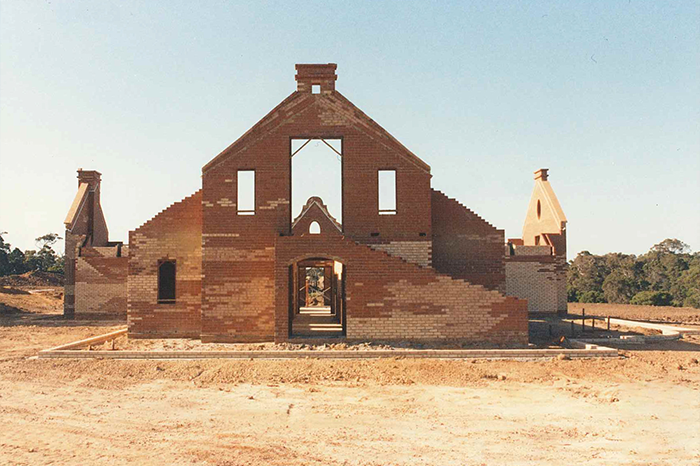
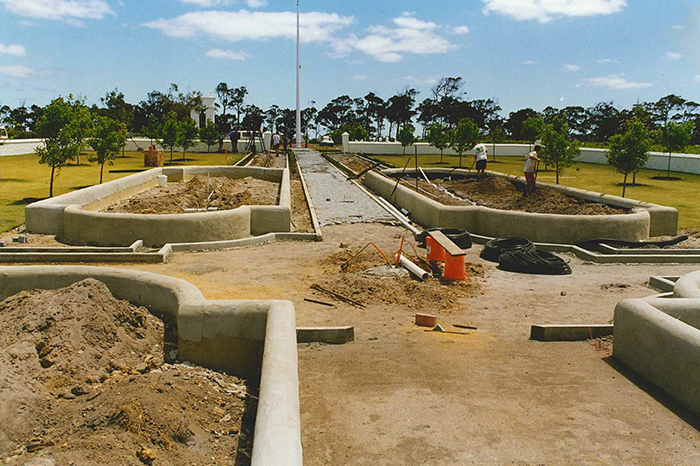


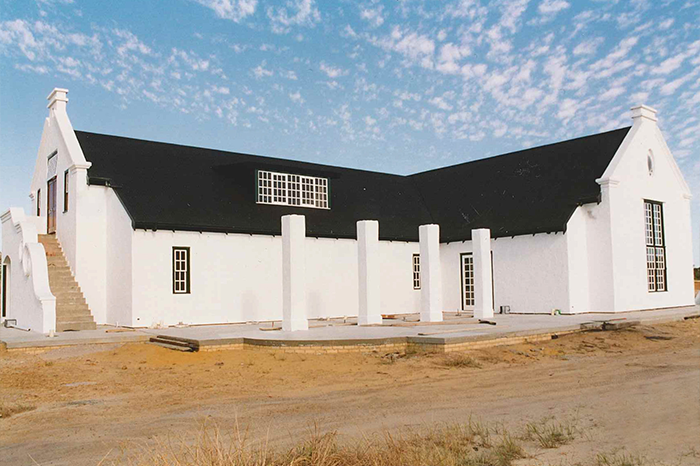
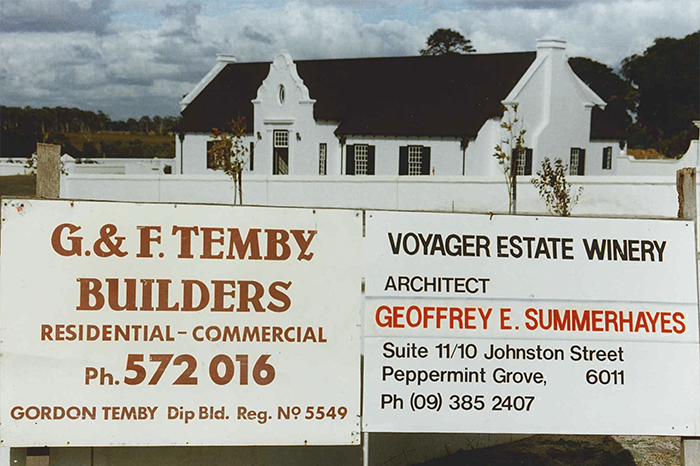
VINTAGE VIGNETTES: WEEK EIGHT
Welcome to the last in our series of snippets straight from Chief Winemaker Tim Shand, revealing all the magic and momentum of our first certified organic vintage...
"A week is a long time in the vineyard and the vintage gods opted to unleash their wrath upon us. The rain flagged in last week’s diary set in for four days, 40mm in total! Our 'wait and see' approach quickly turned into a logistical exercise of picking the remaining Cabernet blocks as quickly as possible.
With an experienced crew in vineyard and winery, we were able to flex up and with some long shifts over the weekend we were all done by Monday. That left small hand picks of Grenache and Petit Verdot on Tuesday and before we knew it Vintage 2023 was in the bag.
As the dust settles, a reassuring mix of Cabernet batches emerges, picked before and after the rain. All are free of botrytis and tannins and flavour are ripe. Despite the tough end to the season, we’ve given ourselves the elements we need to put together some very fine Cabernets and blends.
So this marks my last entry in the Vintage 2023 diary! It’s been a rewarding and enjoyable harvest with exciting wines from across our vineyard – a testament to our wonderful site and diligent team. Vintage in Margaret River is certainly a marathon not a sprint (maybe more accurately a marathon with a mad sprint at the end).
As always in the wine game, there are plenty of lingering ‘what if’s’ to get us thinking forward to the next vintage; pruning commences in a few months as we lay down the canes to see us through to February 2024. I’ll meet you back here then."


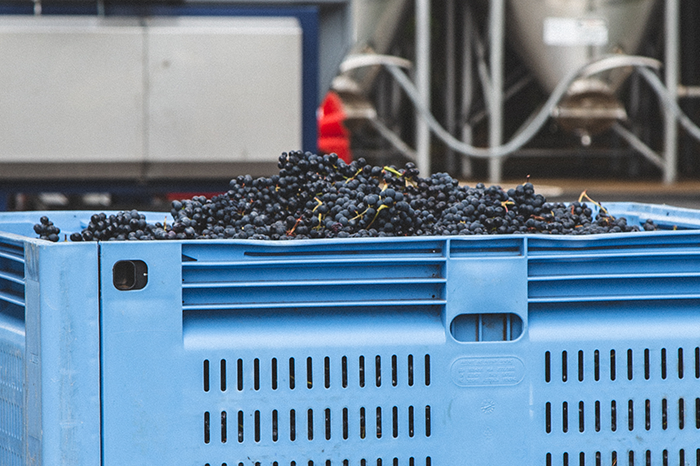
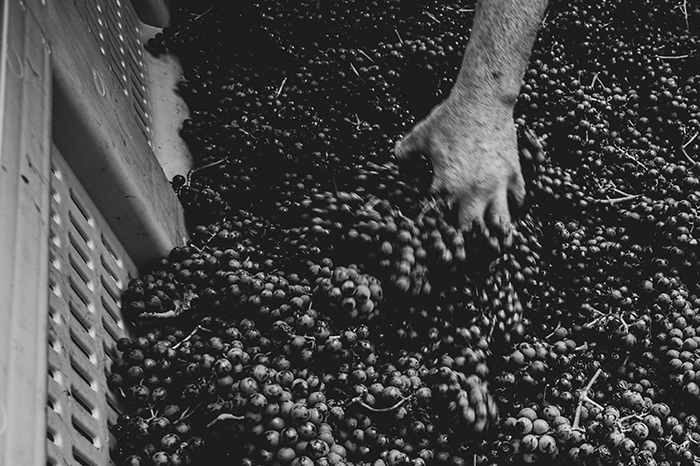
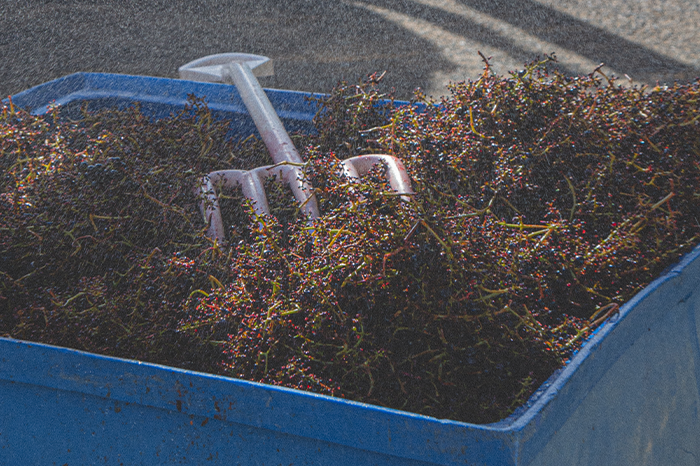
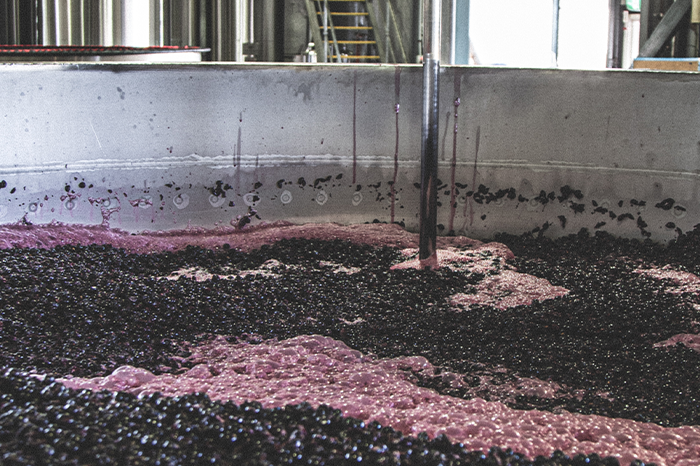
VINTAGE VIGNETTES: WEEK SEVEN
Welcome to the next in our series of snippets straight from Chief Winemaker Tim Shand, revealing all the magic and momentum of our first certified organic vintage...
"As we watch the second cold front of the week cross the capes, whoever was silly enough to call this the Goldilocks vintage is realising that with every Goldilocks comes a big angry Papa Bear at the end.
This vintage has always run about two weeks behind ‘normal’, with grape ripening slow and even, pushed out by the cool spring we had.
Like the frog in the pot, the longer it goes, the closer to the dicey change of season you get, and Easter is notorious for heralding that change in Margaret River.
We rely on three sources for our weather forecast; the Bureau of Meteorology or 'BoM' (blissfully optimistic, for those seeking solace), the Windy app (prudent and detailed, more for the intellectual) and finally the Metvuw website, whose grim colour scheme indicating imminent rain brings together the palette of Jackson Pollock with the bitter reckoning of Nick Cave. It’s best taken with three fingers of Scotch or a triple espresso.
All three sources agreed this week that trouble was on the way. Cabernet, which has had such a good run to this point, suddenly found itself exposed. On the cusp of greatness, but with disaster as its bedfellow. To pick or not to pick, it was time for decisive action. So as a true Libran, I chose both!
We’ve had red hot go in the ripe parts of our best two Cabernet blocks – V9 and U12. The tannin ripeness of the year and the bright red fruit is evident for both batches.
The remaining fruit we entrust to the vintage gods and the diligent preparation of our vineyard team, which goes right back to shoot thinning and de-lateraling in November and the open, well-ventilated canopies they laid down..."

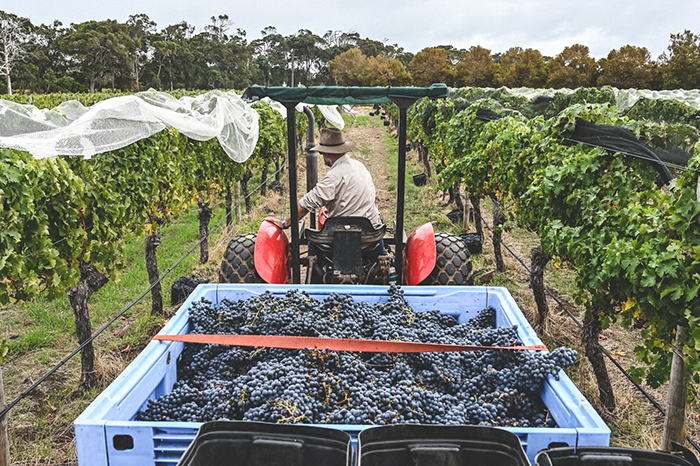
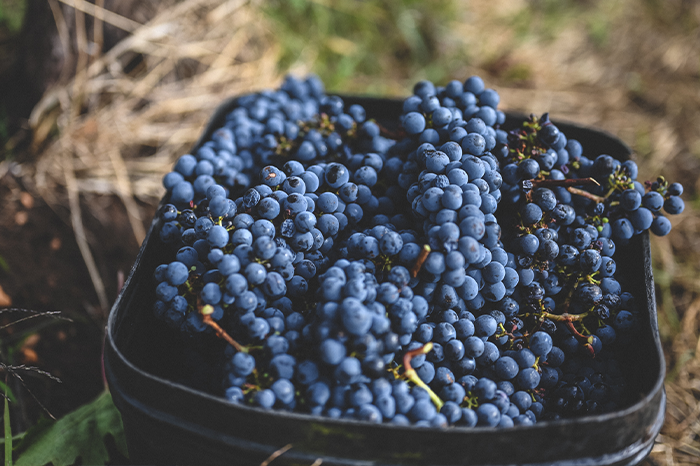
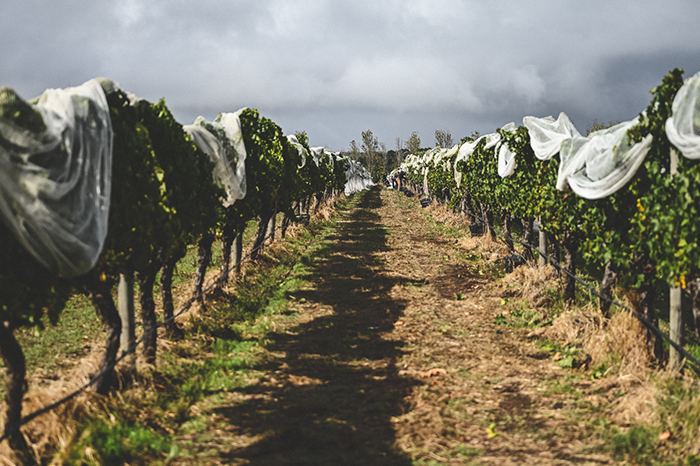
VINTAGE VIGNETTES: WEEK SIX
Welcome to the next in our series of snippets straight from Chief Winemaker Tim Shand, revealing all the magic and momentum of our first certified organic vintage...
"This week was all about Shiraz as we harvested the last fruit from the U11 Block. Chardonnay, Sauvignon Blanc, Chenin Blanc and Semillon have all ripened in a linear and predictable fashion this year, but Shiraz has been harder to track. Tannins ripened early but the fruit lacked intensity at that point.
By the same token, we are keen to pick in the ‘Syrah’ zone of ripeness (think savoury and spicy!) so we’re cautious not to let it hang too long. We anticipated including more stalks in the ferments this year, so the lignification (woodiness) of the stalks is also a factor to consider.
This being my first vintage at Voyager (and with plentiful excellent fruit to work with), we’ve had a bet each way – taking a few different approaches.
One portion we have deliberately picked a touch early, chasing pepper and tension in the wine. It won’t have the stuffing but that will come from elsewhere.
Another portion is all about ripe fruit sweetness against a wall of tannin, the muscle of the future blend.
Our approach with whole bunch is also multi-dimensional. We’ve got a small batch of 100% bunches, chasing carbonic maceration character and made in the full Beaujolais style.
Another bunch approach sees 50% bunches, 50% whole berries in one fermenter. A warm, quick natural ferment should maximise the power of this wine without over-extracting green stalk tannin.
Each of these will be pressed over the coming week or so. They’ll finish ferment in tank before being racked to oak for malolactic fermentation. It will be interesting to see how the different elements come together as a blend."
VINTAGE VIGNETTES: WEEK FIVE
Welcome to the next in our series of snippets straight from Chief Winemaker Tim Shand, revealing all the magic and momentum of our first certified organic vintage...
"The cool nights tell us it’s autumn, but the weather stays sunny and reliable. Older heads in the region caution patience as we start to harvest the reds, it looks to be a vintage that will keep giving if the fruit is allowed to hang. A Goldilocks season indeed - not too hot, not too cold and rain at just the right times.
We had a foray into Shiraz this week. W4 block is always first in, and with low-ish crops and a well-balanced canopy the fruit spectrum ripened evenly into blueberry/mulberry notes with good intensity. We grabbed a touch of Viognier to co-ferment at about 6%.
We also did a small, speculative pick in U11 (our best block) knowing that what we may lose in richness we’ll gain in spice and natural acidity, capturing savouriness and tension with an earlier pick.
The white harvest finished with our intriguing old blocks of Chenin and Semillon. Both planted in 1978 next to the winery, they sit apart from our broader plantings and ripen to their own clock. The fruit characters are very different (more opulent and complex), and we pushed them as far as we felt comfortable to make richer styles from these varieties. They will see skin and whole bunch ferments for enhanced texture and weight, and a nice mix of oak (the Semillon also has our concrete egg to itself for the next few months).
A sneaky bottle of 2015 Pol Roger Vintage Brut (excellent, despite the very warm year there!) was opened in the cellar to celebrate an entirely successful white grape harvest where we were able to pick at a leisurely pace and capture the generosity and detail of the season."




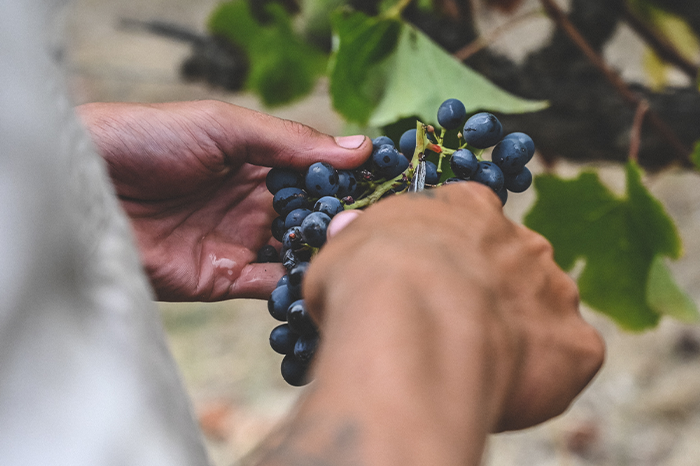

VINTAGE VIGNETTES: WEEK FOUR
Welcome to the next in our series of snippets straight from Chief Winemaker Tim Shand, revealing all the magic and momentum of our first certified organic vintage...
"As the winery fills up, week four of harvest has been all about Semillon and Chenin Blanc.
This has been my first extensive experience with Semillon. As delicious as it is, it presents challenges to vigneron and winemaker alike. In the vineyard it ripens a bit slower than Sauvignon Blanc, and loves to get botrytis at the merest whiff of rain. We really don’t want to rush and pick it underripe though, and are searching for a lemon barley character that indicates the vine has peaked.
In the winery, Semillon grapes tend to ‘slip out of their skin’ when pressed, leaving a little jelly blob behind that is very difficult to press the juice out of! Grapes that keep their flesh on the skin give the press some purchase to squeeze out the juice.
Semillon grapes do not afford us this opportunity and those jelly blobs block up the screens of the press, stopping juice from draining out. So it’s a long, painful process extracting juice from Semillon. But it’s worth it, absolutely the most delicious juice to drink fresh during vintage!
Our main block of Semillon is U10; adjacent to our best Shiraz and Cabernet sites this may be the best dirt on the property. The block carries a bigger crop in the eastern side, probably due to a heavier and more generous soil profile. As a result, the two halves of the block ripen at a different pace.
We grabbed the west prior to the rain on Friday, but were forced to wait it out four long days and nights to go in and pick the east. The birds had a party in the meantime, but we were able to pick around this and the second harvest came in with a similar fruit profile to the first and we're happy with that.
We have one more pick of Chenin and Semillon to come, from small blocks adjacent to the cellar door car park. These will be picked Thursday, followed by a quiet celebration marking the end of the white grape harvest. We’ll be into Shiraz and Merlot by the weekend."
A PROUD MILESTONE
This month marks an important milestone in our sustainability journey, as we celebrate the news that our entire Voyager Estate vineyard is now officially Australian Certified Organic.
Voyager Estate’s journey to organics began many years ago. Our vineyards have been farmed sustainably for decades, so our conversion to organic farming and pathway to certification was just a natural next step. In 2004, the team began trialling an organic farming approach to our heritage Old Block Cabernet, and our organics journey was formalised over a ‘kicking the dirt’ chat with proprietor Alex Burt in 2016. The official three-year certification process began in 2017.
The first stage of our transition was completed in January 2020, with the first vineyards becoming certified organic and our winery also becoming a certified organic processor, enabling the wines to be certified organic from the 2020 vintage onwards.
Since beginning the journey, we have shifted our operations in various ways, including using beneficial bugs to combat pests, making our own compost, and evolving our irrigation system to conserve water. For our team the key driver is to consciously build a healthy and resilient vineyard and leave the land in a better condition than we found it.
A huge congratulations to our Vineyard and Winery teams who have worked tirelessly to meet the rigorous standards required to achieve this accreditation – we could not be prouder!
Voyager Estate's official conversion brings the total area of certified organic and biodynamic vineyards in Margaret River to 738 hectares, or 12.6% of the region.
VINTAGE VIGNETTES: WEEK THREE
Welcome to the third in our series of snippets straight from Chief Winemaker Tim Shand, revealing all the magic and momentum of our first certified organic vintage...
"A few days’ breather from harvesting to start the week and a good chance to consolidate our Chardonnay – checking ferments and topping barrels. Broadvale Block 6 Chardonnay was nearly through its first fermentation, so we inoculated to kick off secondary malolactic fermentation (to soften the acid) which will transpire over the next month or so.
By Wednesday morning it was time to push go on picking our Chenin Blanc fruit for the Voyager Sparkling Chenin Blanc. Whilst we love to see crisp acidity in the sparkling base, it’s crucial not to jump too early with picking Chenin as it can carry a green bean or herbaceous note. Again, we were blessed by the season here as the fruit ripened evenly, and we picked the fruit at excellent acidity for sparkling (11 g/L) with pink lady apple notes and not a hint of greenness!
Thursday we were into the Sauvignon Blanc, which is a big portion of the harvest for us. It’ll take five days to pick all the sauvy fruit for the Voyager Estate Sauvignon Blanc Semillon, with the Semillon usually a week behind. The picking decision here is around finding a distinct passionfruit flavour in the fruit, again avoiding greenness and any hard acidity. The window came at a low baumé (sugar level) this year.
Silver-eyes, twenty-eights and crows have descended upon us en masse, so the vineyard crew are busy netting the Shiraz, Merlot and Cabernet to keep them safe over the next month. We might get a touch of rain on Wednesday, but so far conditions have been ideal for an excellent red harvest. We wait in hope..."
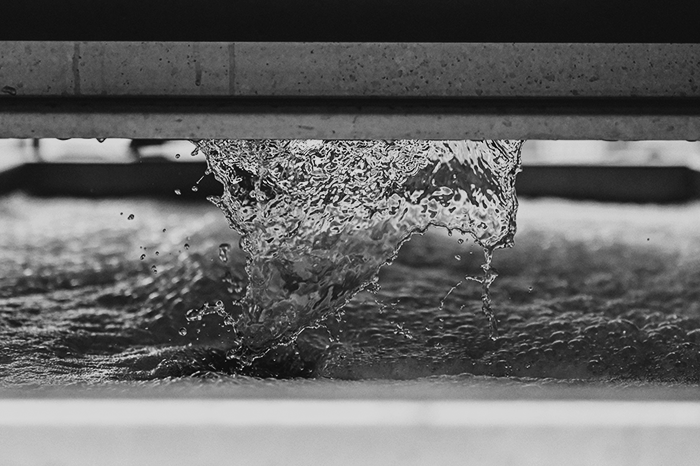
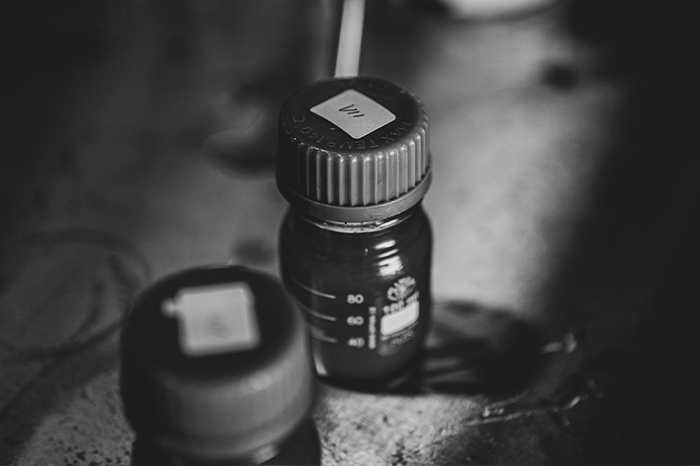

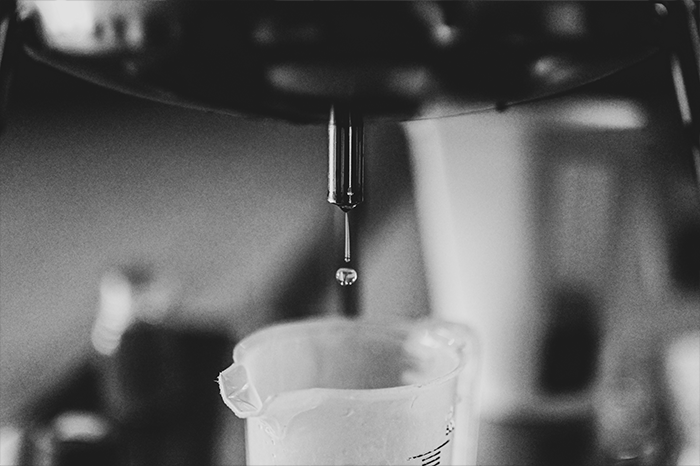


SILVER STATUS
In exciting news we’re proud to share that we’ve achieved Silver Membership status with International Wineries for Climate Action.
IWCA said of our achievement: “Voyager Estate has made sustainability a core mission for decades. The winery’s achievement of IWCA silver level is a reflection of their dedicated efforts to measure and reduce their emissions and champion climate action in the industry.”
IWCA is a collaborative working group of wineries committed to reducing carbon emissions across the global wine industry. Members at the Silver level commit to becoming net zero by 2050 across Scopes 1-3 and have completed a minimum baseline third-party-verified greenhouse gas emissions inventory.
For more information, visit the IWCA website.
CELEBRATING WOMEN IN WINE
On International Women’s Day, we are celebrating all the women we’re fortunate enough to call colleagues, customers, and friends.
A special salute to the exceptional women at Voyager Estate, who are dedicated to creating one-of-a-kind wine experiences for our guests each and every day – including our passionate Restaurant Manager Angie Evans.
What does International Women's Day mean to you?
Although I hope that some day in the not too distant future we will collectively reach a point where we no longer need an International Women’s Day, I think that right now, it's a great way to celebrate the huge progress we have made towards equality for the genders. It’s also an opportunity to think about and plan further movement in this direction.
Tell us about your journey in hospitality – how did your career unfold and what do you love most about it?
After my secondary education, as a green 19-year old, I got a job at a grand café in the centre of Rotterdam in the Netherlands. It was here my passion for hospitality ignited. It was also my first introduction to wine! The first wine I got really excited about was the Saint Clair Sauvignon Blanc from Marlborough. My career at Voyager started quite suddenly after a lunch experience I had here with my husband. Everyone was so passionate in their service delivery, the food and wine were so excellent and the level of care was so high that I wanted to be a part of that!
What I love about hospitality is that I get to facilitate the making of memories. I LOVE going out for a great meal! Not just because of the wine and food, but the whole experience. I want our guests to feel special because of all the things we do that aren’t expected. That’s what an excellent hospitality experience is for me.
What fascinates you most about the world of food and wine?
The endless possibilities! I love food with lots of flavour and different textures. I sometimes wake up with the idea of a drink or dish in my head. Could be something I’ve had before or something I would like to try. Yesterday I woke up thinking about the sigara böregi that I used to get from the Turkish restaurant around the corner from my house in The Hague. I find wine fascinating because it can convey information about a place and time. It never tastes the same! It ages and changes and the way it tastes also depends on how you feel, where you are, what you've eaten...
What contribution during your time at Voyager are you most proud of?
This must be building our passionate front of house team. Each of them contributes something really important. There is open communication between us and we all strive to do things better. We help one another to learn and grow and we always celebrate our wins together. I am also quite proud of the non-alcoholic beverage offering I have developed for our menu. This offers an important alternative to those guests that don’t drink or can’t drink right now.
What challenges, if any, do you see for women in the hospitality business?
Drawing from personal experience, I think the single biggest challenge women face is a lack of confidence. Even when we are hugely capable, conscientious and visionary, we seem to doubt ourselves! Taking the lead can sometimes seem challenging and less inherent. The key to overcome this? Stop comparing and start celebrating your wins and those of others. Elevate the people around you and you elevate yourself.
Which women inspire you most?
All the women in my life inspire me! I realised about ten years ago that surrounding myself with inspiring people is so enriching. No one person offers the same thing, but that’s the beauty of it! My friends and colleagues inspire me to be confident, to love unconditionally, to achieve, to investigate, to have fun, to grow spiritually and to look after ourselves and one another.
What would you say is the most important attribute for a successful career in hospitality?
Passion. I think you have to really love this industry and be energised by it. When you strive toward delivering something excellent, whether an experience, a dish or a wine list, you keep learning, developing and moving things forward.
What is the best piece of advice you've ever received?
"If you don’t like it, you can just go home.” This applied to travelling, but the gist can be applied to everything in life. If you want to do something, just start. You don’t always have to know exactly where you are going all the time. If you stay stationary and try to work out your entire plan, you might never actually go anywhere. Plus, I’m in no way a chess player, so I cannot calculate all possible outcomes! Also, most of the time, where we end up is a completely different place to where we planned to go. And that’s the beauty of it. If I hadn’t gone with the flow a decade ago, I would never have made it to Australia!
What advice would you offer to women who want to pursue a career in hospitality?
Be confident. If the passion is there, go after what you want. Create what you feel is missing or would like to see more of. Surround yourself with people that encourage you and help you on your journey. Be curious as well. Speak to people that are passionate about the same things and find out how they got to where they are. And don’t beat yourself up if you don’t get it right the first time. Learn from it and move on.


